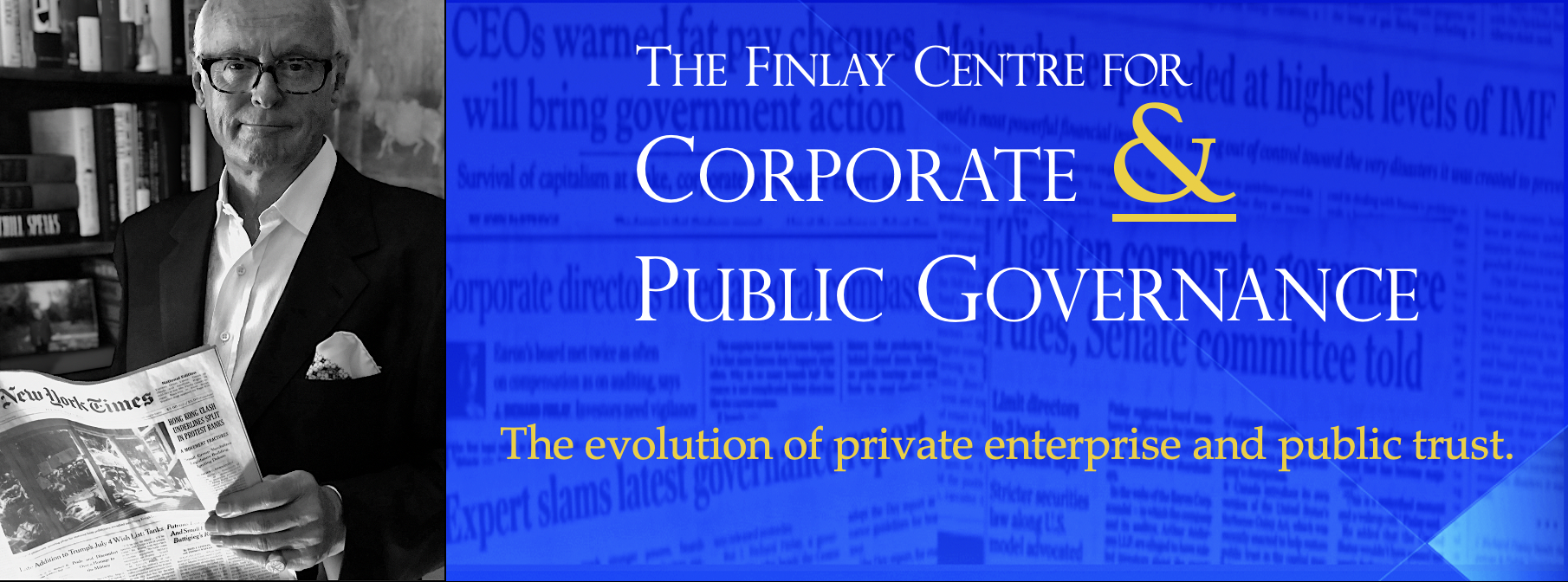
Like a ghost ship that vanishes and reappears in the mist with long gaps in between, the strange case of Bre-X has taken another turn. The judge who was supposed to deliver his verdict this week announced that he was postponing it until next July, thus taking a full year since closing arguments were made. It is just another one of the strange twists in a case that is like peering through Alice’s Looking Glass.
Here’s part of what I wrote about Bre-X in the Financial Post in 1997, before any charges were laid.
At its height, Bre-X had a market capitalization in excess of Imperial Oil, Bombardier, Inco and Molson combined. And that was without any sales or profits. That alone should have prompted major financial institutions and pension funds, not to mention regulators, to take a closer look at the company. It never happened.
Bre-X was a massive fraud to be sure. But it was also a massive failure of corporate governance. And the failure occurred on a number of fronts. With its insider board, dubious disclosure record, curious insider trading patterns, ever-expanding boasts about ore deposits and confusion about who owns them, Bre-X was a time bomb waiting to go off. But those who could have defused it heard only the siren song of fast money and not the tick, tick, tick, of impending ruin.
Questions began to surface about the company in 1996. A strange little man hired by Bre-X as its local geologist, and who should have had the answers, mysteriously fell to his death from a helicopter in Indonesia in March of that year. The stock soon plunged to a similar fate. Accusations and investigations followed. Eventually, only one person, Bre-X’s chief geologist, John Felderhof, was charged. And it wasn’t even under Canada’s Criminal Code. The alleged offense was one of insider trading under Ontario’s Securities Act.
The case was heard in Ontario provincial court, Canada’s most junior bench, where drunk drivers and break and enter crooks are taken. Mr. Felderhof was charged in 1999. His case came to trial in 2000. During the course of the trial, the Ontario Securities Commission, which is prosecuting the case, decided it didn’t like the judge’s rulings. It sought his removal. Incredibly, that side show lasted nearly fours years. The OSC lost in its attempts to get a new judge and the trial resumed. Closing arguments took place last July. The verdict was to have been delivered this month but the judge announced he needed more time, so the decision is another six months off. There is no jury in cases like this –that’s the way it’s done in Canada. Its antiquated justice system may not require wigs in the courtroom any longer but it resembles its English parent nevertheless, clinging to the notion that Her Majesty’s realm would be imperiled if juries took an active role in dispensing justice like they do in the United States.
Everything about Bre-X shouts of dysfunctionality, if not incompetency. It was a company whose way was paved to a premier listing on the top TSE (as it was at the time) 100 index by unworried securities gatekeepers eager to have the business generated by a hot stock. That mistake gave Bre-X an important imprimatur to investors and its stock soared even further. Due diligence was, shall we say, perfunctory for a junior mining company whose stock capitalization reached into the billions and had never made a penny in profit.
There were more red flags about Bre-X prior to its collapse than fly on an admiral’s ship. Some of those I highlighted in the excerpt above. (I actually raised a number of governance questions during interviews with reporters about Bre-X while it was at the top). No gold, other than samples that were “salted”, was ever found. Billions were eventually wiped out, except for the hundreds of millions the founders conveniently made by cashing in their shares in a feet of remarkable luck, when the stock was at the top and no gold had been produced. Yet the RCMP, Canada’s federal police force, claims that it couldn’t find anyone to charge with criminal wrongdoing. Since Canada is the only member of the G8 and one of the few OECD nations not to have a single, federally legislated securities commission, and prefers that securities matters instead fall to some 13 separate provincial and territorial jurisdictions, the OSC was left to pursue the matter on its own. Like many cases the OSC prosecutes, this one was headed for trouble. It set in motion a chain of events that led to the longest originating trial in Canadian history. In fact, between the period when Mr. Felderhof was charged in 1999 and closing arguments were heard in 2006, the prime suspects in one of Canada’s biggest trials, the Air India case, where 329 passengers were killed by a terrorist bomb, were charged, their case heard and the verdict given in a British Columbia court. The judge in the Bre-X case will spend longer pondering and writing his verdict than was taken by the judge in the Air India trial or in most of Canada’s top appellate cases.
All the actors in this spectacle have much to answer for, yet few seem prepared to begin that process. The farce continues. In Bre-X, Canada’s systems of corporate governance, securities regulation, law enforcement and judicial functioning have all been revealed at their worst and in dire need of major reform, which makes the mishandling of the biggest mining scandal in history the Outrage of the Week.
